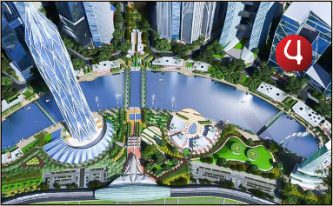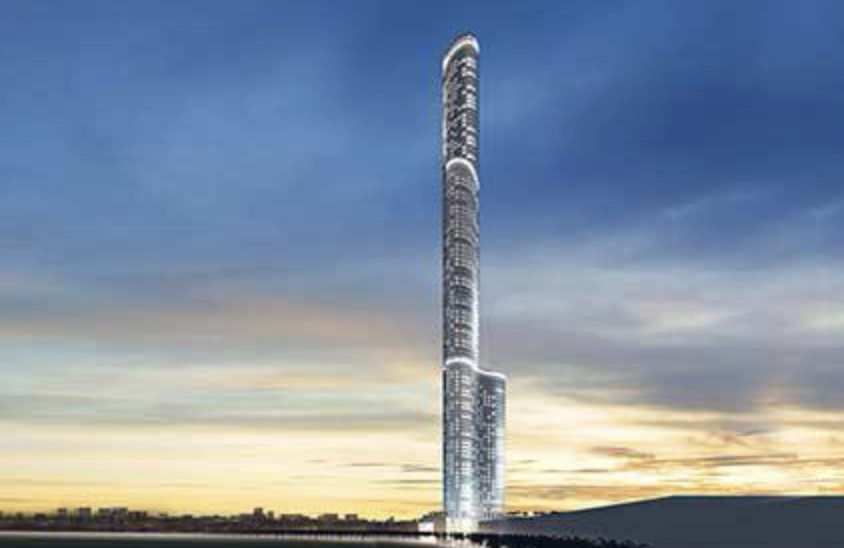

THE EMERGING YOUTUBE CHANNEL EverythingIndiaPro has posted a video about the amazing infrastructure developments now underway in India. The video focuses on just five of India’s many up-and-coming mega projects, several of which are magnitudes beyond anything attempted in India before. In it we learn about the high-speed bullet trains that will connect portions of the country; world-class airports; record-breaking residential skyscrapers; entire futuristic cities and IT hubs for the country.
1. Navi Mumbai International Airport
The NMIA was proposed in 1997 and received the government’s approval in 2007. In February, 2017, the us$2.5 billion project moved a step closer to reality with contractors acquiring the bid to build and operate the facility. According to the City and Industrial Development Corporation of Maharashtra, the first phase of the airport will be able to handle 10 million passengers annually. By 2030 it is expected reach full capacity of 60 million passengers a year.
2. Mumbai-Ahmedabad Bullet Train
Prime Minister Narendra Modi has approved the choice of Japan to build India’s first-ever high-speed rail, planned to run some 310 miles between Mumbai and Ahmedabad at a top speed of 200 mph. The system will have a 13-mile underground tunnel, one-third of it under the sea. Above ground, the line will be elevated, at some points by 65 feet, reducing the need for land acquisition. The proposal calls for construction to begin in 2017 and be completed in 2023 at a cost of $15 billion, financed by a low-interest loan from Japan. The railway is expected to be operational in 2025.
3. World One Tower
World One is 1,450 feet tall residential skyscraper now under construction in Mumbai. It is located in Lower Parel on the 17.5-acre site of the defunct Shrinivas Mill, the site of two other impressive towers—World View and World Crest. World One carries a price tag of $321 million. Construction began in 2011 and the target for completion is 2018. World One will be the tallest building in India and the world’s second-tallest residential tower, topped only by Central Park Tower in New York City.
4. Gujarat International Finance Tech City
GIFT is to be a central business district between Ahmedabad and Gandhinagar in Gujarat. Covering 886 acres of land, it will provide high-quality physical infrastructure (electricity, water, gas, district cooling, roads, telecoms and broadband) so that finance and tech firms can relocate their operations there from areas like Mumbai, Bangalore, and Gurgaon, where infrastructure is either inadequate or overly expensive. GIFT will have a special economic zone, international education zone, integrated townships, an entertainment zone, hotels, a convention center, an international techno park, Software Technology Parks of India units, shopping malls, stock exchanges and service units.


5. Delhi-Mumbai Industrial Corridor
The Delhi-Mumbai Industrial Corridor Project is planned as a $100-billion commercial development project between India’s capital, Delhi, and its financial hub, Mumbai. It is one of the world’s largest infrastructure projects, a high-tech industrial zone spread across six states (Delhi being a Union Territory), along the 930-mile-long Western Dedicated Freight Corridor, which serves as its backbone. The high-speed DFC will reduce the time for movement of goods between Dadri (near Delhi) and Jawaharlal Nehru Port (in Mumbai) from the current 14 days to about 14 hours.
Project plans include 24 industrial regions, eight smart cities, two airports, five power projects, two mass rapid transit systems and two logistical hubs. The work is progressing at a rapid pace, with the dedicated freight corridor expected to be completed by December, 2019.
India may have missed the industrial revolution, but almost thirty years ago they more than caught up by taking the IT world to new heights. With these infrastructure projects (and others not covered by this video), India is once again entering new frontiers. The transportation, cities and integrated living structures India is developing now could well serve as models of advanced communities and society for the rest of the world.






